Technologies
Why Apple Vision Pro’s $3,500 Price Makes More Sense Than You Think
Commentary: Apple’s first headset is too expensive for most people. But there are a few reasons why it isn’t so farfetched.
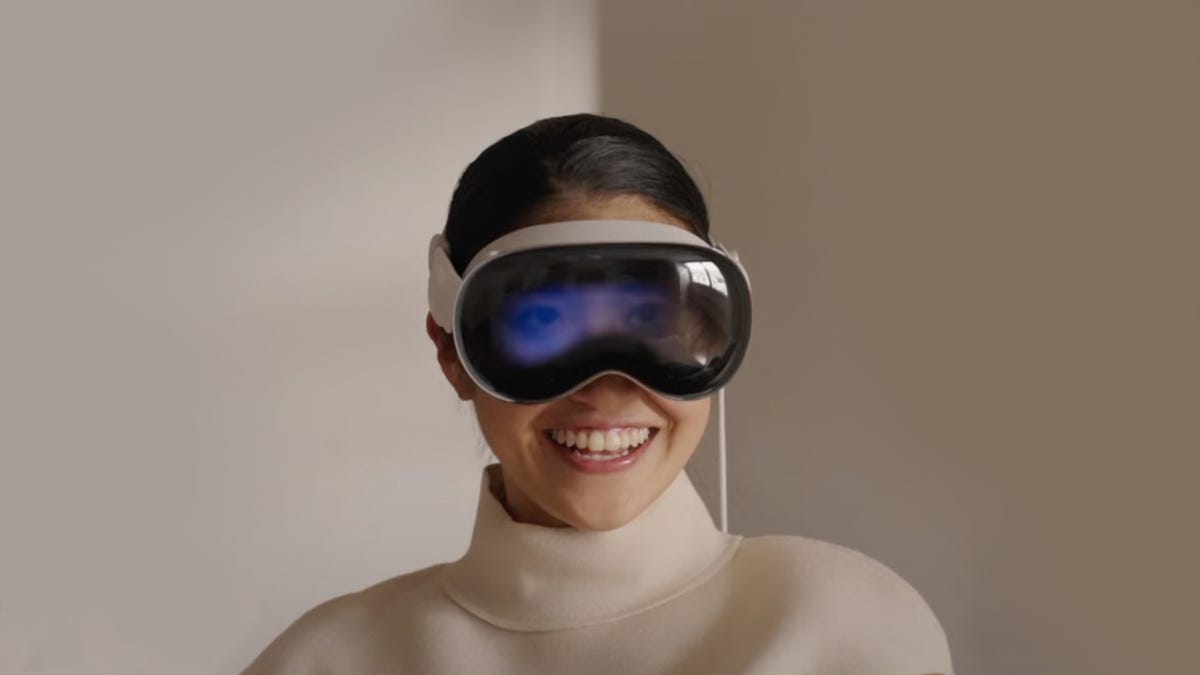
Apple announced its long-awaited Vision Pro mixed reality headset at its Worldwide Developers Conference on Monday, signaling its first major new product in almost a decade. The problem? You’ll have to pay $3,500 to try it.
That’s a lot (even for Apple), sparking a deluge of Twitter memes and a collective groan from the audience present at Apple’s conference.
Behind those jokes, there’s a valid point. At $3,500, Apple’s Vision Pro costs more than three weeks worth of pay for the average American, according to Bureau of Labor Statistics data. It’s also significantly more expensive than rival devices like the upcoming $500 Meta Quest 3, $550 Sony PlayStation VR 2 and even the $1,000 Meta Quest Pro.
It tops many other Apple products in terms of price too. Buying an iPhone 14 Pro Max, a 12.9-inch iPad Pro and an Apple Watch Ultra would still be cheaper than an Apple Vision Pro (although it comes fairly close.) Shipments of virtual and augmented reality headsets also plummeted in 2022, according to International Data Corporation statistics published in March, adding to the skepticism.
In an interview Tuesday with ABC News’ Good Morning America, Apple CEO Tim Cook acknowledged the headset’s price when asked if the average person would be able to afford it.
«I think people will make different choices depending upon their current financial situation,» he said.
To call Apple’s new headset expensive may be an understatement. But once you step back and look at the larger picture beyond the initial sticker shock, that eye-watering price starts to make a little sense.
More from WWDC 2023
Vision Pro’s price is comparable to a high-end Mac
Despite Vision Pro’s high price, it’s far from being the most expensive computer Apple sells. There’s another Apple computer that’s roughly double the price, the $6,999 Mac Pro, which just got its first major refresh since 2019 at WWDC on Monday. Apple’s modular desktop powerhouse is designed for professionals rather than everyday consumers, meaning it’s not intended for everyone.

The new Mac Pro is $6,999.
Even the MacBook Pro can get more expensive than most may realize once you configure it with high-end specifications. Like Vision Pro, a 16-inch MacBook Pro with Apple’s M2 Max processor, 32GB of unified memory and 1TB of storage will run you $3,499.
Years of research and development are also likely reflected in Vision Pro’s price. Since it’s an entirely different type of computer compared to the Mac, iPhone or iPad, Apple had to develop new technologies such as the R1 chip, which processes data from the headset’s 12 cameras, five sensors and six microphones. Mike Rockwell, vice president of Apple’s technology development group, even said during the WWDC keynote that the company filed over 5,000 patents during Vision Pro’s development. That effort certainly shows, according to CNET’s Scott Stein, who was impressed with the headset’s fidelity, video quality and interface.
«The engineering and depth of engineering in it is mind blowing,» Cook also said during the Good Morning America interview. «You’ve got more than a 4K experience in each eye. And, of course, it doesn’t come for free. It costs something to do that. «
That said, there’s a key difference that can make Vision Pro’s price more difficult to swallow compared with the MacBook Pro or Mac Pro. Both of those products are well established and have proven their usefulness to the creative professionals willing to pay for them. Vision Pro, however, is an entirely new product category that most people aren’t familiar with yet. It has yet to prove its value, and most people outside of Apple’s campus haven’t used it — except for select press that have gotten to try it in a demo controlled by Apple.
Microsoft’s HoloLens 2 is the same price as Vision Pro
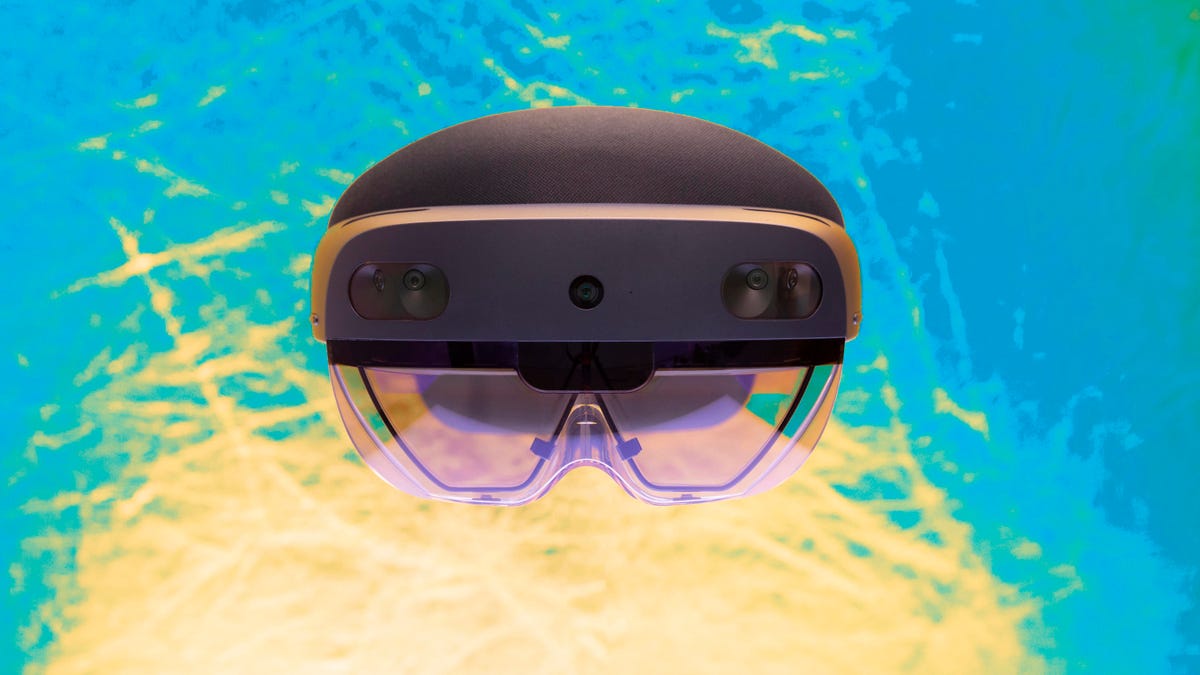
Microsoft’s HoloLens 2
Long before there was Vision Pro, there was Microsoft’s HoloLens, a head-mounted computer that also sought to change the way we work by overlaying digital graphics on top of the real world. The original HoloLens debuted in 2015 and the second version arrived in 2019 for $3,500 — the same price as Apple’s Vision Pro.
On one hand, that makes Vision Pro’s price more sensible. But there are some important differences between Apple’s new head-mounted computer and the HoloLens to consider. Take one look at Microsoft’s website for the HoloLens 2, and it’s clear the company sees this as an enterprise device more than a personal computer.
While the HoloLens may have initially been positioned as the next generation of computing, Microsoft is now primarily touting its usefulness in fields such as manufacturing, construction, health care, engineering and education. For companies and institutions, that makes purchasing a HoloLens 2 more like investing in a new piece of equipment rather than buying a new computer. Apple, however, seems to be targeting Vision Pro at everyday consumers that want a bigger canvas for working, watching movies and participating in FaceTime calls.
New tech gadgets usually get cheaper over time

Apple’s Vision Pro headset
First-generation technology products are typically expensive and limited compared with their successors. When the iPhone arrived in 2007, there was only one model and it started at $500, or roughly $749 in 2023 when adjusted for inflation. It included a paltry 4GB of storage, only one camera and just 15 apps. Even though Apple’s top-of-the-line iPhone 14 Pro will still cost $1,000 or more, Apple now sells several iPhones and different price ranges.
That includes the $429 iPhone SE, which has 16 times as much storage as the entry-level first iPhone, a significantly larger 4.7-inch screen compared to the original’s 3.5-inch display, a fingerprint reader and many other technologies that weren’t widely available back in 2007. And by 2023’s standards, the iPhone SE is about $320 cheaper than what Apple charged for the first iPhone.
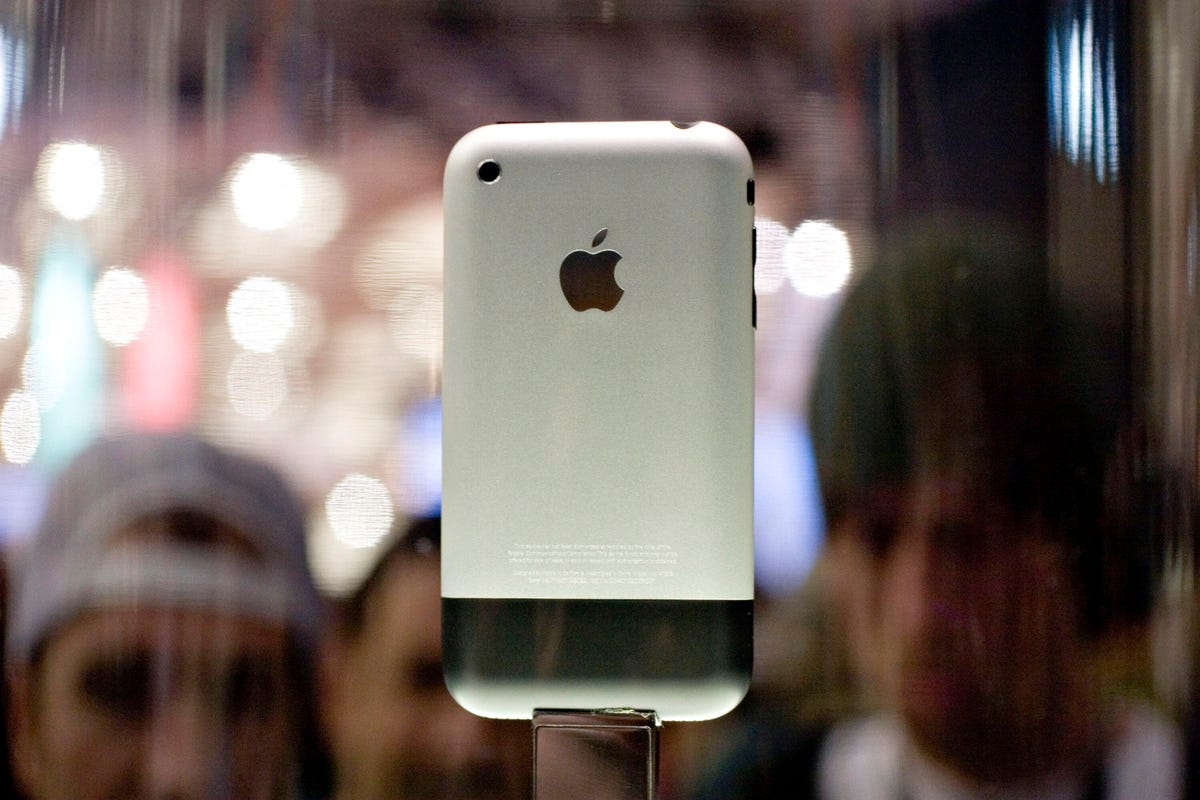
An original Apple iPhone on display during MacWorld in San Francisco, California, on Tuesday, Jan. 9, 2007.
A more direct comparison might be looking at the trajectory of virtual reality headsets. When the first Oculus Rift launched in 2016, it cost $599 and needed to be tethered to a powerful computer in order to work. But today’s Meta Quest 2 costs half the price at $300 and works wirelessly.
My point: Technology gets more affordable and more advanced over time. Don’t get me wrong, Vision Pro’s price will almost certainly prevent the current iteration of Apple’s headset from becoming as ubiquitous as the iPhone or Apple Watch.
However, that might not be the point — at least not right now. With Vision Pro, Apple is trying to establish what it believes will be the next major evolution of the personal computer. That’s a bigger goal than selling millions of units on launch day, and a shift like that doesn’t happen overnight, no matter what the price is. The version of Vision Pro that Apple launches next year likely isn’t the one that most people will buy.
Technologies
Today’s Wordle Hints, Answer and Help for Dec. 25, #1650
Here are hints and the answer for today’s Wordle for Dec. 25, No. 1,650.
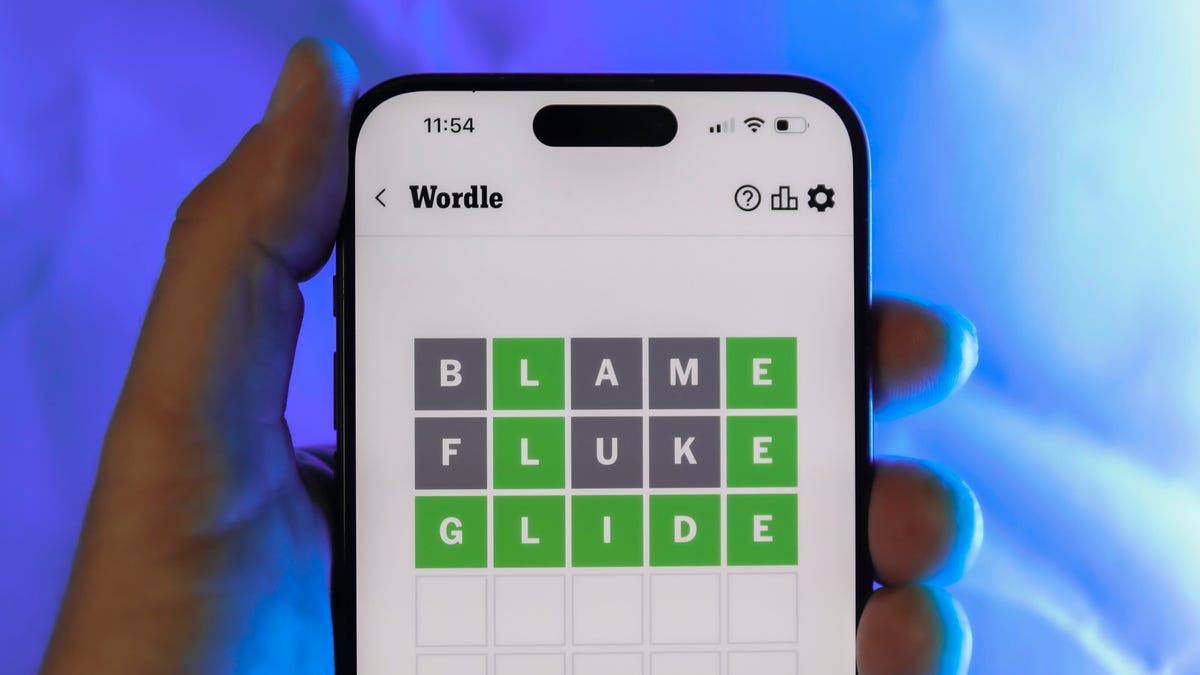
Looking for the most recent Wordle answer? Click here for today’s Wordle hints, as well as our daily answers and hints for The New York Times Mini Crossword, Connections, Connections: Sports Edition and Strands puzzles.
Today’s Wordle puzzle has some tough-to-guess letters. If you need a new starter word, check out our list of which letters show up the most in English words. If you need hints and the answer, read on.
Read more: New Study Reveals Wordle’s Top 10 Toughest Words of 2025
Today’s Wordle hints
Before we show you today’s Wordle answer, we’ll give you some hints. If you don’t want a spoiler, look away now.
Wordle hint No. 1: Repeats
Today’s Wordle answer has no repeated letters.
Wordle hint No. 2: Vowels
Today’s Wordle answer has one vowel.
Wordle hint No. 3: First letter
Today’s Wordle answer begins with P.
Wordle hint No. 4: Last letter
Today’s Wordle answer ends with M.
Wordle hint No. 5: Meaning
Today’s Wordle answer can refer to a geometric figure.
TODAY’S WORDLE ANSWER
Today’s Wordle answer is PRISM.
Yesterday’s Wordle answer
Yesterday’s Wordle answer, Dec. 24, No. 1649, was SPOOL.
Recent Wordle answers
Dec. 20, No. 1645: WHITE
Dec. 21, No. 1646: QUILT
Dec. 22, No. 1647: CONCH
Dec. 23, No. 1648: GLINT
Don’t miss any of our unbiased tech content and lab-based reviews. Add CNET as a preferred Google source.
What’s the best Wordle starting word?
Don’t be afraid to use our tip sheet ranking all the letters in the alphabet by frequency of uses. In short, you want starter words that lean heavy on E, A and R, and don’t contain Z, J and Q.
Some solid starter words to try:
ADIEU
TRAIN
CLOSE
STARE
NOISE
Technologies
This Two-Faced Watch Band Lets You Hide an Apple Watch Under Your Rolex
The $418 Smartlet literally bridges the gap between your elegant analogy and your nerdy smartwatch.
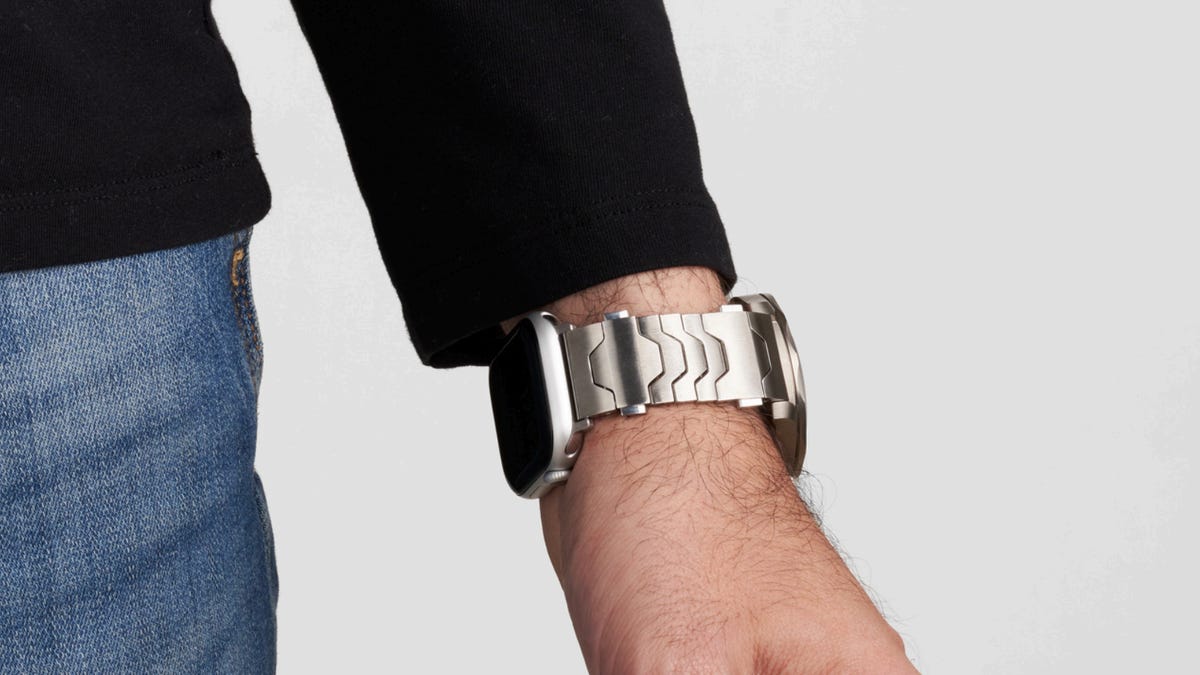
The Consumer Electronics Show is never short on ambitious ideas, but Smartlet may be one of the more unusual ones this year: a modular watch strap that lets you wear a traditional mechanical watch and a smartwatch on the same wrist, simultaneously. One on top of the other.
The Paris-based startup announced Smartlet at the 2026 CES in Las Vegas, pitching it as a solution for people who love the look of an analog watch but also want the practicality of a smartwatch for notifications, fitness tracking and mobile payments. Instead of choosing between the two, Smartlet’s system lets you mount an old-school timepiece on the front of your wrist while hiding a smartwatch or fitness tracker on the underside.
The stainless steel strap starts at $418 and doesn’t include a smartwatch or a mechanical watch. What you’re really buying is the strap system, which is compatible with most major smartwatches and fitness trackers, including Apple Watch, Samsung Galaxy Watch, Google Pixel Watch, Garmin models, Fitbit Charge devices and Whoop. On the analog side, it supports watches with lug widths from 18 to 24 mm, which includes high-end models from brands such as Omega, Tudor, TAG Heuer and Rolex.
The idea comes from founder David Ohayon, who says he was tired of having to play favorites every morning, choosing between his analog and Apple Watch. Smartlet, in theory, offers the best of both worlds, letting you toggle from fitness nerd to polished executive with the flick of a wrist.
In practice, it raises some serious questions, the biggest one being bulk. Smartlet says the system adds between 9 and 12 mm of height to the underside of the wrist once a connected device is attached. As someone who already manages to scratch watches without trying, the idea of strapping a second device to the underside of my wrist, where it regularly comes in contact with desks, armrests and tabletops, sounds like a walking nightmare.
There’s also the aesthetic. Smartlet is clearly aimed at what it calls the «modern gentleman,» with marketing language that leans heavily into luxury watch culture and phrases like «from the boardroom to the weekend.» Translation: This is a watch for wealthy men who want to show off their investment piece without sacrificing their gym gain tracking.
And while it may not be the most practical, or budget-friendly solution for most people, Smartlet is one of those highly niche, standout products that had us doing a double take at this year’s CES.
Technologies
Today’s NYT Strands Hints, Answers and Help for Dec. 25 #662
Here are hints and answers for the NYT Strands puzzle for Dec. 25, No. 662.
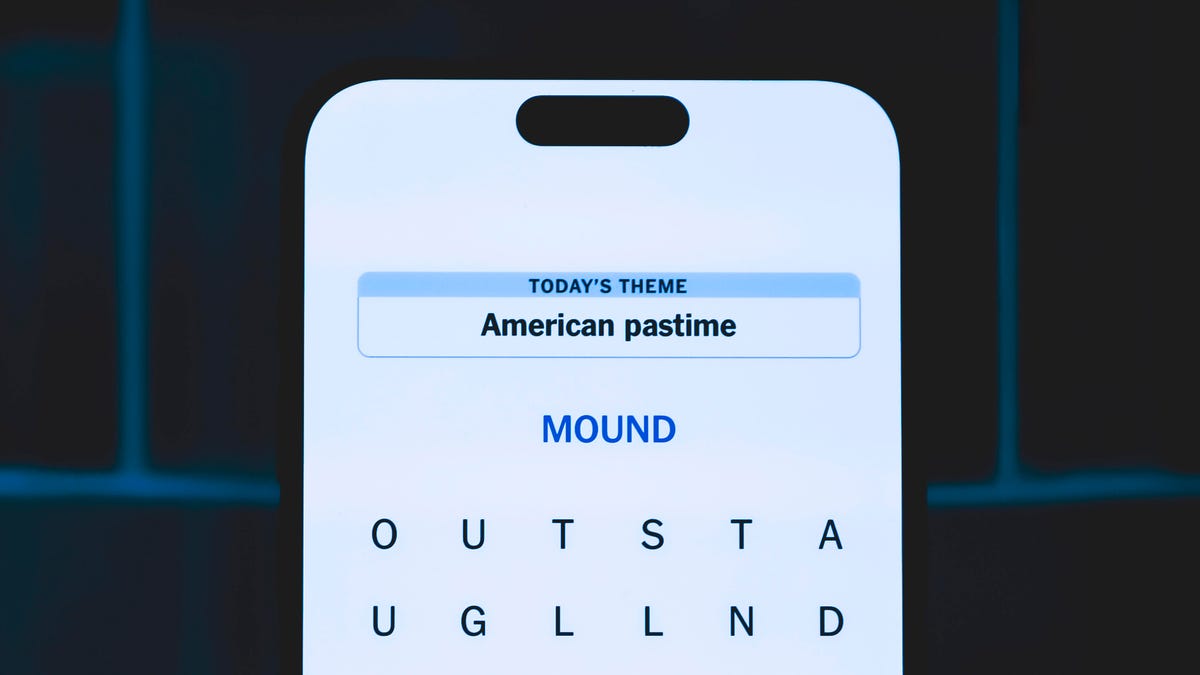
Looking for the most recent Strands answer? Click here for our daily Strands hints, as well as our daily answers and hints for The New York Times Mini Crossword, Wordle, Connections and Connections: Sports Edition puzzles.
Today’s NYT Strands puzzle has a holiday theme, and if you know a certain Christmas carol, you’ll quickly determine which words to hunt down. Some of the answers are difficult to unscramble, so if you need hints and answers, read on.
I go into depth about the rules for Strands in this story.
If you’re looking for today’s Wordle, Connections and Mini Crossword answers, you can visit CNET’s NYT puzzle hints page.
Read more: NYT Connections Turns 1: These Are the 5 Toughest Puzzles So Far
Hint for today’s Strands puzzle
Today’s Strands theme is: Carolers count.
If that doesn’t help you, here’s a clue: Five golden rings.
Clue words to unlock in-game hints
Your goal is to find hidden words that fit the puzzle’s theme. If you’re stuck, find any words you can. Every time you find three words of four letters or more, Strands will reveal one of the theme words. These are the words I used to get those hints but any words of four or more letters that you find will work:
- RIMS, HIMS, MARS, CHIME, CHIMES, MADS, DATE, DIAL, WAIL
Answers for today’s Strands puzzle
These are the answers that tie into the theme. The goal of the puzzle is to find them all, including the spangram, a theme word that reaches from one side of the puzzle to the other. When you have all of them (I originally thought there were always eight but learned that the number can vary), every letter on the board will be used. Here are the nonspangram answers:
- LORDS, MAIDS, SWANS, LADIES, PIPERS, DRUMMERS
Today’s Strands spangram
Today’s Strands spangram is CHRISTMASDAYS. To find it, look for the C that’s three letters down on the far-left row, and wind across.
Don’t miss any of our unbiased tech content and lab-based reviews. Add CNET as a preferred Google source.
Toughest Strands puzzles
Here are some of the Strands topics I’ve found to be the toughest in recent weeks.
#1: Dated slang, Jan. 21. Maybe you didn’t even use this lingo when it was cool. Toughest word: PHAT.
#2: Thar she blows! Jan.15. I guess marine biologists might ace this one. Toughest word: BALEEN or RIGHT.
#3: Off the hook, Jan. 9. Similar to the Jan. 15 puzzle in that it helps to know a lot about sea creatures. Sorry, Charlie. Toughest word: BIGEYE or SKIPJACK.
-

 Technologies3 года ago
Technologies3 года agoTech Companies Need to Be Held Accountable for Security, Experts Say
-

 Technologies3 года ago
Technologies3 года agoBest Handheld Game Console in 2023
-

 Technologies3 года ago
Technologies3 года agoTighten Up Your VR Game With the Best Head Straps for Quest 2
-

 Technologies4 года ago
Technologies4 года agoBlack Friday 2021: The best deals on TVs, headphones, kitchenware, and more
-

 Technologies4 года ago
Technologies4 года agoVerum, Wickr and Threema: next generation secured messengers
-

 Technologies4 года ago
Technologies4 года agoGoogle to require vaccinations as Silicon Valley rethinks return-to-office policies
-

 Technologies4 года ago
Technologies4 года agoOlivia Harlan Dekker for Verum Messenger
-

 Technologies4 года ago
Technologies4 года agoiPhone 13 event: How to watch Apple’s big announcement tomorrow
